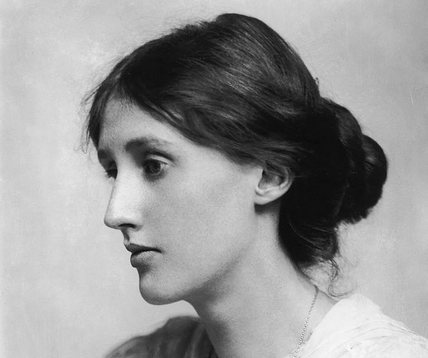Virginia Woolf's "I am Christina Rossetti"
/
It is not only royalty who are allowed to use the royal “we” when addressing the masses, commoners are allowed too, especially if you are literary royalty such as Virginia Woolf. Woolf uses the royal “we” in her point of view right from the start in her essay, “ I am Christina Rossetti.” She says, “on the first of this December, Christina Rossetti will celebrate her centennial, or, more properly speaking, we shall celebrate it for her.” In using this royal we, Woolf draws the reader into the essay. We are culprits in this celebration and immediately want to know what is it we are celebrating? What makes Rossetti worth partying about? Woolf invites us along, “we shall read her life; we shall read her letter; we shall study her portraits, speculate about her diseases…and rattle the drawers of her writing-table.” Even if you had never heard of Christina Rossetti, you think to yourself, “why how enchanting! Yes, let’s do that.” By using that we, Woolf has us hooked and she knows it. She walks us over to peer into Mary F. Sandars biography on Rossetti and describes it to us as one looking into a curio box.
Here is the past and all its inhabitants miraculously sealed as in a magic tank; all we have to do is to look and to listen and to listen and to look an soon the little figures-- where they are rather under life size will begin to move and to speak an as they move we shall arrange them and all sorts of patterns of which they were ignorant, for they thought when they were alive that they could go anywhere they liked; and as they speak we shall read into their sayings all kinds of meanings which never struck them for they believed when they were alive that they said straight off whatever came into their heads. But once you are in a biography all is different.
Woolf challenges us to look even closer at Rossetti. What we see is not all that is there. “Indeed if we look at her a little more closely we shall see that something dark and hard, like a kernel, had already formed in the center of Christina Rossetti's being.” Woolf tells us that it was Rossetti’s religion. Every angle in which she saw the world was threw the lens of her religion. “Everything in Christina's life radiated from that not of agony and intensity in the center.” By continuing to use the royal we, Woolf guides us to see this in Rossetti. It was the lens in which she chose which games to play, which art was holy and which men to love.
Woolf invites us again to peer into the curio box and pinpoints a moment when all changed for Rossetti. When at a tea party, someone made a “casual, frivolous remark about poetry.” Christina rose from her chair, paced and announced, “I am Christina Rossetti!” She was announcing herself as a poet. Standing up for herself. Woolf seems to say that in that moment, poetry becomes more of a lens in which she views the world than religion. Poetry has become her religion.
Woolf identifies with this and for the first time in the essay, uses the 1st person,
Had I been present when …a short elderly woman in black risen to her feet and advanced to the middle of the room, I should certainly have committed some indiscretion have broken a paper-knife or smashed a tea-cup in the awkward ardor of my admiration when she said “I am Christina Rossetti!”
Even though she has changed to 1st person, she still draws us in to identify with herself and Rossetti. We have become her confidants, her friends as we discovered Rossetti together. Had she continued to use we, the reader would have said to themselves, “No, I don’t believe I would have made a stink. Don’t tell me what I would have done.” Now we see how Woolf identifies with Rossetti and we look closer, at Woolf and at Rossetti.
In my own writing, I’d love to draw the reader in like that. I came to the essay with a small amount of knowledge or interest in Rossetti but Woolf kept me engaged. She invited me to see Rossetti as she did and I was enchanted.
This essay as well as so many BRILLANT others are found in Woolf’s Second Common Reader.

